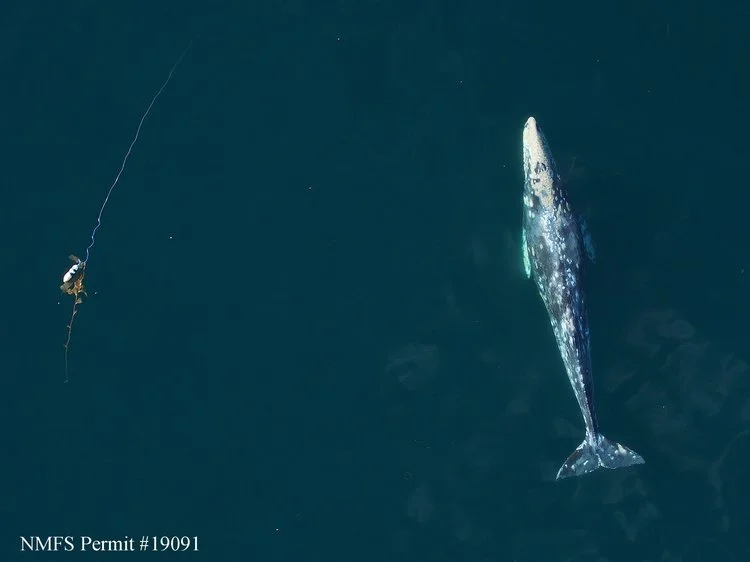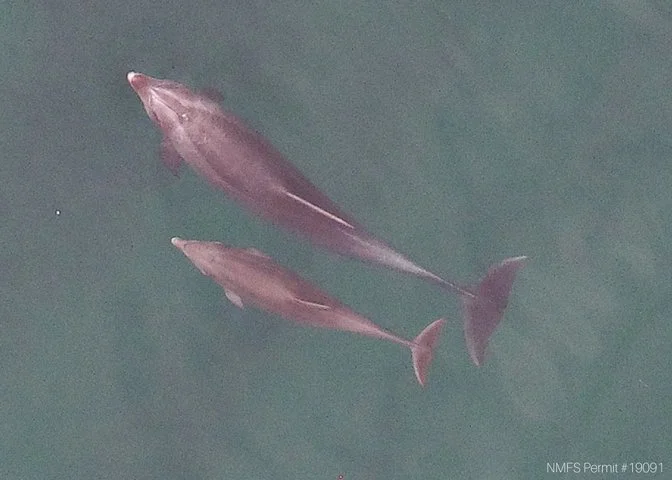Dr. Fearnbach Checks in From Her San Diego Based Field Work
SR3’s Dr. Holly Fearnbach finished a successful first month of fieldwork in the coastal waters of San Diego County. Holly and her colleagues, Drs. John Durban and Dave Weller from NOAA Southwest Fisheries Science Center (SWFSC) are using an unmanned hexacopter to obtain vertical images to assess size, body condition and pregnancy rates of individual dolphins and large whales. The team has flown 15 flights over 28 individual bottlenose dolphins, two groups of long-beaked common dolphins (~130 individuals), one minke whale, and one juvenile gray whale during its southbound migration. Aerial images of bottlenose dolphins will be matched to
the long-term photo-identification catalog maintained by SWFSC, allowing measurements to be linked to individuals with known life histories. Common dolphin images will provide further baseline data on group demography, spacing behavior and swim speeds for this species and gray whale images will be included in the SWFSC/SR3 ongoing gray whale health assessment
project. Length and condition of individual gray whales will be compared between the southbound migration to breeding grounds in Mexico in early winter and northbound migrations to feeding grounds in the North Pacific in late spring. The team only observed and photographed the young gray whale for about 20 minutes, but during that time it swam past more than a dozen lobster pots (see photo). Entanglement in fishing gear is an increasing concern for large whales as they navigate coastal waters during migration.
Aerial images of a female bottlenose dolphin and her calf (right) and a juvenile gray whale swimming in close proximity to a lobster pot (left). Entanglement in fishing gear is an increasing concern for large whales as they navigate coastal waters during migration. Images were collected in the coastal waters off San Diego County for photogrammetry measurements with an unmanned hexacopter at ~100ft altitude, with authorization under NMFS permit #19091.


